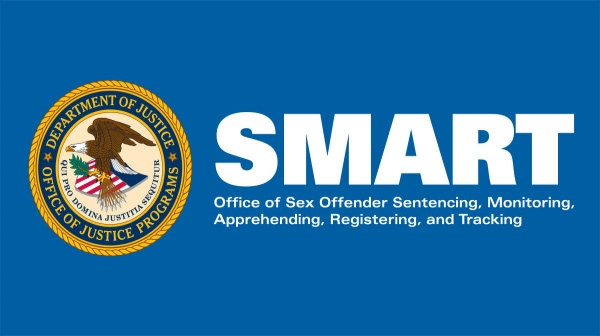What will the new federal SORNA regulations mean?
By NARSOL Larry and Sandy . . . Not since the initiation of International Megan’s Law (IML) has anything raised such a level of anxiety, confusion, and questions as have the new federal SORNA/AWA guidelines that will become effective January 7, 2022. The only consensus seems to be that whatever happens, it won’t be good.
These recent amendments are not anything new in terms of actions taken by the U.S. Department of Justice (DOJ) to implement the Adam Walsh Act (AWA). The DOJ was tasked by Congress to promulgate regulations which guide the states with implementation of the AWA. Although the AWA was passed and became law in 2006, only eighteen states have thus far been deemed “substantially compliant.”
Many of our advocates mistakenly believe that the remaining states have rejected the AWA. Rather than this being the case, the non-compliant states. for the most part, have not rejected the AWA. In fact, the majority of non-compliant states have submitted request packages to the SMART office (Sex Offender Monitoring, Apprehension, Registration and Tracking) in Washington, DC. The status of each state can be checked here. Clicking on the “implementation review” link will show where the state falls short as well as revealing whether or not the state has applied for compliance.
As for what these amended guidelines are designed to do, the one-sentence answer is that they are intended to assist those states and jurisdictions that desire to become substantially AWA compliant an easier path to accomplish that goal.
A logical question might be which states are the most likely to adopt the new guidelines and which might be least likely. The answer to this is not as speculative as it seems; states that want to be in compliance might well use this as an opportunity to accomplish their objectives with administrative implementation.
However, if a state has a number of significant areas in which it is not up to the federal SORNA standards, just saying, “Yes, we accept the new guidelines,” is not sufficient. All that would do is make it legal to implement the standards. To be compliant, they would have to actually implement them, and that will be more difficult if there are many shortcomings because legislation would be necessary.
So which states might be less likely to adopt these guidelines? Some states, especially the southern ones, already have a registry that exceeds federal AWA requirements in some areas. They may have felt no need to seek compliance, or they may have been turned down on their original application because of a shortcoming in an area they have no intention of rectifying, such as registration of juveniles, for example.
States with a great many deficiencies and deviations from AWA requirements are probably less likely to seek this avenue. Even though they may wish to be compliant, they may face too many difficulties, for a variety of reasons, in actually implementing their registries so that they are acceptable for compliance to the SMART office.
Some states have provisions in their constitutions that prohibit a federal SORNA requirement. Maryland’s constitution, for example, states that no disadvantage can be imposed ex post facto to its citizens, and attempts to impose some of the AWA-required elements have been shot down not once but twice by their highest court, making it less likely that they will try again. The key is their ex post facto provision is broader than that in the U.S. Constitution, so Maryland chooses to provide more protection. So do a number of states. Any state constitution can provide more protection that does the U.S. one; it just can’t provide less.
The same is true with these federal SORNA requirements. A state can do more than required and be compliant; they just can’t do less. These are recommendations to the states. If a state wishes to be fully funded, without any loss of funding, it will do at least these things. It can do more but not less.
However, each state is independent with the right to self-govern. Any state that wishes to do so can add amendments that grant its citizens greater protection, such as Maryland and others have done. Adding constitutional amendments to a state’s constitution is a difficult task but not impossible.
Another question that has arisen regarding the revised AWA guidelines is if they have the potential to affect every person with a previous sexual crime conviction. The federal definition of a person required to register is anyone who has ever been convicted of a sexual crime, even those pre-registry who never had to register. States are highly unlikely to go looking for these individuals, but if they come to the attention of the criminal justice system with any type of felony conviction and they had an old conviction for a sexual crime, they must, according to the federal SORNA scheme, be added to the registry. This too is confusing because if the person’s offense is a Tier I or Tier II, enough time may have passed that the state would not be required to capture that person.
And then the question becomes if it wouldn’t be unconstitutional to redefine who does and doesn’t have to register due to an administrative implementation. This is entering even deeper into unknown territory. Everything a branch of the government does is considered to be constitutional. It isn’t until litigation takes places and a court declares it unconstitutional that the question is answered.
Therefore, a state’s becoming compliant with the Adam Walsh Act through administrative fiat is likely to usher in a fresh new set of lawsuits, something that those of us in this advocacy enthusiastically welcome.
